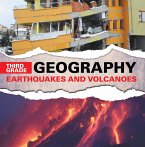The book progresses logically, starting with the geological context of earthquakes and key seismic concepts, like seismic waves and their impact on structures. It explains the differences between P-waves, S-waves, and surface waves, detailing how factors like magnitude and soil conditions influence earthquake intensity.
Earthquake Facts emphasizes that while complete prevention is currently impossible, a deeper understanding is vital for mitigating their impact, especially in regards to secondary hazards like tsunamis and landslides. Ultimately, the book aims to empower readers to assess risk and advocate for safer building codes and earthquake preparedness. It blends seismological data, geological surveys, and historical records, incorporating real-world case studies to demonstrate the application of scientific principles to disaster response. The book adopts an accessible approach, making complex topics understandable for a broad audience interested in nature, earth science, and geography.
Dieser Download kann aus rechtlichen Gründen nur mit Rechnungsadresse in A, B, BG, CY, CZ, D, DK, EW, E, FIN, F, GR, H, IRL, I, LT, L, LR, M, NL, PL, P, R, S, SLO, SK ausgeliefert werden.









